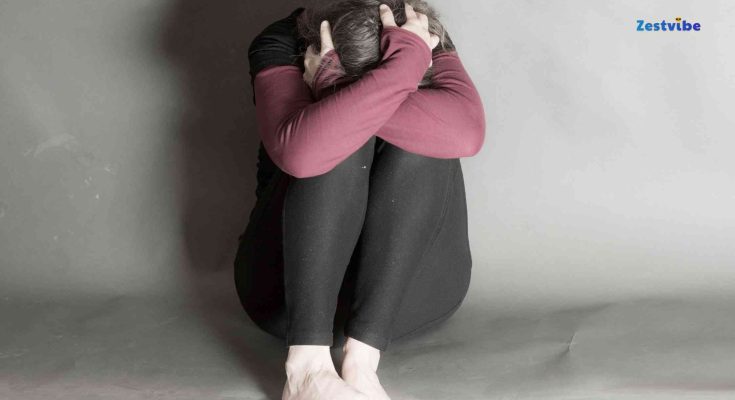Traumatic events can shake us to our core, leaving us feeling lost, overwhelmed, and struggling to regain our emotional footing. Whether it’s the death of a loved one, a natural disaster, abuse, or any other profoundly distressing experience, trauma has a way of disrupting our sense of safety and well-being. However, it’s crucial to understand that healing is possible, and there are techniques and strategies that can help you process and move forward from even the most profound traumas.
Proven Techniques To Heal From Trauma
These techniques will not just help you to move forward but, in the longer run, help you in healing from that trauma.
Understanding Trauma
Before we delve into the healing process, it’s essential to understand what trauma truly is. Trauma is not the event itself but rather our mind and body’s response to that event. It’s the shock, sadness, anxiety, and overwhelming emotions we experience in the aftermath of a deeply distressing occurrence. Trauma can affect the brain, making it vital to take steps toward recovery and mitigate its negative effects.
Accepting Support
The first and most crucial step in healing from trauma is to cultivate a willingness to accept help and support. Recognize that you don’t have to go through this journey alone, and there are people and resources available to guide you along the way. This support can come from loved ones, support groups, therapists, or even colleagues and friends. The key is to open yourself up to receiving assistance and understanding that others can play a significant role in your healing process.
Finding the Right Help
Once you’ve embraced the idea of accepting support, the next step is to find the right type of help for your specific situation. If therapy feels like the appropriate avenue, seek out a trauma-informed therapist who specializes in working with individuals who have experienced trauma. They will have the expertise and knowledge to provide you with the best possible care and guidance.
Alternatively, if you find comfort in the idea of connecting with others who have gone through similar experiences, consider joining a support group. These groups can offer a sense of understanding and community, allowing you to share your story and learn from others’ journeys.
Connecting with Others
Whether or not you attend a support group, it’s essential to maintain connections with others throughout your healing process. This doesn’t necessarily mean centering your trauma in every conversation or interaction. Simply spending time with friends, engaging in social activities, and fostering a sense of community can play a vital role in your recovery.
Isolation can often exacerbate the negative effects of trauma, leading to conditions like depression. By surrounding yourself with supportive individuals, even if you don’t directly discuss your experiences, you create an environment conducive to healing.
Physical Movement
Exercise and physical movement have been shown to have a positive impact on symptoms of post-traumatic stress disorder (PTSD). Engaging in activities like walking, cycling, yoga, or even dancing can provide your body with a much-needed dose of endorphins – the feel-good chemicals that can improve your mood and overall well-being.
The key is to find a form of physical activity that resonates with you and brings you joy. If traditional exercise doesn’t appeal to you, explore alternative options like roller skating, hiking, or even just putting on some music and moving your body in whatever way feels natural and enjoyable.
Working with Your Feelings
Healing from trauma often involves navigating a complex web of emotions, and it’s essential to create space for processing and expressing these feelings. Journaling can be an effective tool for managing stress and working through the intricacies of your experiences. However, if writing doesn’t resonate with you, simply taking the time to sit with your emotions and allow yourself to fully experience them can be equally powerful.
Embrace the full spectrum of emotions that may arise – anger, sadness, fear, or even joy. There is no right or wrong way to feel, and acknowledging and accepting these emotions is a crucial part of the healing journey.
Practicing Self-Care
Self-care is a vital component of the healing process, as it helps reduce stress and cultivate a sense of love and compassion for oneself. Incorporate simple yet meaningful acts of self-care into your routine, such as taking a warm bath, engaging in a favorite hobby, or spending time in nature.
Remember, self-care doesn’t have to be grand or extravagant; it’s about consciously setting aside time to nurture your physical, emotional, and mental well-being. Treat yourself with the same kindness and consideration you would offer a dear friend or loved one.
Avoiding Recreational Substances
While it may be tempting to turn to substances like alcohol or drugs as a means of escaping or numbing the pain of trauma, it’s important to avoid this path. Recreational substances can be addictive and prevent you from fully processing and working through your emotions.
Rather than avoiding your feelings, allow yourself to experience them fully and work through them in a healthy and productive manner. Remember, this is a temporary phase, and once you’ve made progress in your healing journey, you can revisit activities like social drinking if desired.
Taking Breaks
Healing from trauma can be an exhausting process, both physically and mentally. It’s crucial to be gentle with yourself and recognize that you may experience periods of reduced energy or cognitive function. When you feel overwhelmed or fatigued, give yourself permission to take a break.
Step away from the healing work, even if it’s an activity you typically enjoy, and allow yourself to rest and recharge. This self-compassion and respect for your body’s and mind’s needs will ensure that you don’t become overly drained, enabling you to approach the healing process with renewed energy and resilience.
Practicing Mindfulness or Meditation
Mindfulness and meditation are powerful tools that can support your healing journey. Mindfulness involves being present in the moment and fully attentive to your thoughts, emotions, and physical sensations. This practice can help alleviate stress and cultivate a sense of grounding and calm.
Similarly, meditation and breathwork can improve stress levels and promote a state of relaxation and inner peace. Incorporating these practices into your daily routine, even for a few minutes at a time, can have a profound impact on your overall well-being and ability to process and cope with the effects of trauma.
Engaging in Creativity
Finally, engaging in creative pursuits can be a wonderfully therapeutic and healing activity. Creativity can take many forms, from making music or writing poetry to simply reading a work of fiction or immersing yourself in art.
The act of creativity has been shown to improve both physiological and psychological outcomes in individuals, providing a outlet for expression, self-discovery, and joy. Whether you choose to explore art therapy or simply find solace in personal creative endeavors, embracing your creative side can be a powerful tool in your healing journey.
Conclusion
Healing from trauma is a journey, and it’s one that requires patience, self-compassion, and a willingness to explore various techniques and strategies. Remember, you are not alone in this process, and there are countless resources and support systems available to guide you along the way.
By accepting support, finding the right help, connecting with others, engaging in physical movement, working with your emotions, practicing self-care, avoiding recreational substances, taking breaks, practicing mindfulness or meditation, and embracing creativity, you can cultivate a path toward healing and regaining a sense of wholeness and well-being.
The road may be challenging at times, but with each step forward, you are making progress and reclaiming the joy, peace, and resilience that trauma may have temporarily taken away. Believe in your ability to heal, and trust that brighter days lie ahead.


